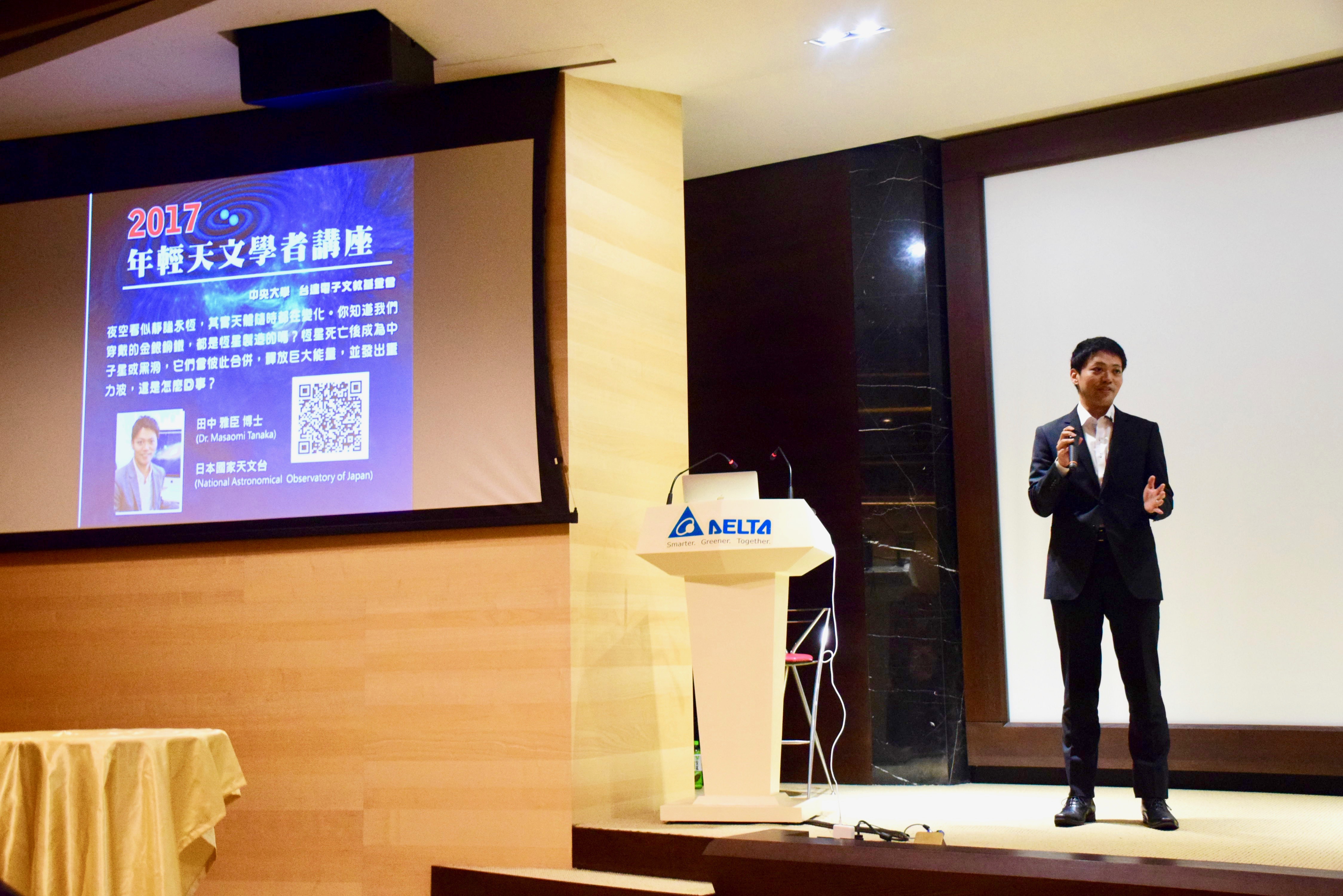Dr. Masaomi Tanaka*, Assistant Professor in the Division of Theoretical Astronomy, National Astronomical Observatory of Japan (NAOJ), has won the Autumn 2017 NCU-DELTA Young Astronomer Lectureship Award. This award recognizes his contributions to research in "time domain astronomy," which is research about time-varying astronomical phenomena such as supernova explosion and neutron star mergers. (December 1, 2017 released)
* Dr. Tanaka is also an Assistant Professor in the Department of Astronomical Science, School of Physical Sciences, the Graduate University for Advanced Studies (SOKENDAI).
The NCU-Delta Young Astronomer Lectureship Award recognizes young astronomers who have made outstanding achievements in the field of astronomy. This award was established by the Graduate Institute of Astronomy, National Central University (NCU) in Taiwan and Delta Electronics Foundation. NCU and the Delta group invite recipients to Taiwan for short periods to interact with young researchers in Taiwan, in order to motivate the Taiwanese researchers. The recipient gives a colloquium for researchers at the Graduate Institute of Astronomy, NCU; a public lecture at Delta Electronics Foundation; and astronomy lectures at a high school in Taipei. The winner has the opportunity to talk about his latest astronomical research with many people, not just other experts.
Dr. Tanaka is working on theoretical and observational approaches to study explosive and transient phenomena in the Universe, such as supernova explosions and neutron star mergers. By theoretically predicting the characteristics of electromagnetic radiation emitted from explosive phenomena and then actually observing them with the Subaru Telescope, he is attempting to clarify the physical mechanisms of explosive objects. The electromagnetic radiation predicted by simulations of neutron star mergers he has been conducting since 2013 was actually detected in 2017 coming from gravitational wave source GW170817, proving that great quantities of heavy elements are generated from neutron star mergers. (Refer to the following CfCA press release: "Astronomers Follow Gravitational Waves to Treasure".)
Examining how the characteristics (brightness, etc.) of an object change with time in order to elucidate the physical mechanisms occurring in the object is referred to as “Time Domain Astronomy.” Dr. Tanaka was awarded in recognition of his contributions in this field. “It is a great honor for me to receive this award,” He beamed. “It was a wonderful experience to give talks and lectures not only at National Central University, but also at Delta Electronics Foundation, and National Taichung First Senior High School. My visit was just after the release on the first gravitational wave follow-up observations of electromagnetic waves emitted from the merger of neutron stars. So, I was fortunate to present about the latest hot topic to researchers, the general public, and high school students in Taiwan.”
 |
Figure 2: Dr. Tanaka giving the public lecture at Delta Electronics Foundation on October 20, 2017. (Credit: Delta Electronics Foundation) |
Related Links